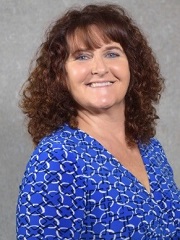CareMore Health: Addressing loneliness leads to lower rates of ED, hospital use
- CareMore Health is trying to combat the loneliness epidemic in seniors through a holistic program that views loneliness as a treatable condition.
- Formally trained connectors handle the initial outreach, but in many cases ongoing communication falls to a staff member who volunteers to participate in the program.
- Early results include significant decreases in ED use and hospital admissions for seniors in the program, compared with a peer group.
Senior loneliness is an epidemic in the United States, and research shows that loneliness potentially increases a person’s risk of mortality by 45%. That statistic makes loneliness more dangerous than air pollution, obesity and excessive alcohol use.
That’s why CareMore Health, a subsidiary of Anthem, launched the Togetherness Program in 2017. We address senior loneliness as a treatable condition by focusing on patients’ psychological, social and physical health. The results show we are on the right track.
To date, more than 1,000 senior patients at risk of loneliness have enrolled in the program. In my role as chief togetherness officer, I work with a team of “connectors” to engage these patients and assess their needs. Our goals are to engage them in taking care of their health, connect them with community resources and motivate them to exercise.
Through those steps, patients become less lonely and use fewer healthcare resources. Enrollees decreased their emergency department (ED) utilization by 3% in year one, while a comparison group increased ED use by more than 20%. Hospital admissions among program participants are 21% lower than among the comparison group.

How the program works
Our Togetherness patients typically live alone, spend the majority of the day in isolation and have no social support or caregiver. Some of them are caregivers with little support themselves, or perhaps newly widowed individuals with little social support. The average age of program members is 74, and 60% are female.
Our clinicians use a loneliness screening tool embedded in the electronic health record to assess our senior patients during their annual “Healthy Start” appointment, which includes a health-risk assessment, screenings for fall risk and other issues associated with aging, and a laboratory assessment. Patients who screen positive for loneliness are referred to the Togetherness Program for outreach.
The “Togetherness Connectors” on my staff reach out to patients by telephone to identify gaps in care or in desired support. A connector may learn that a patient needs a wheelchair, an oxygen tank, a referral to a behavioral health counselor or something else that would improve their well-being, and we facilitate meeting those needs.
Our Togetherness Connectors frequently connect patients with Meals on Wheels and transportation services, but we go beyond that when needed. For example, if a leaking roof is causing a patient distress, my staff members can find a community resource that helps disabled people with home repairs.
Since the program started, we have observed Togetherness patients exercising more. In fact, program participants increased their engagement with exercise programs such as Nifty after Fifty and SilverSneakers by 57% in year one. Of course, these individuals are not just improving their physical health by exercising, they are connecting with others.
Learning as we grow
As we gain experience, we are learning how to improve engagement. During the first outreach call, a Togetherness Connector assesses a patient’s psychological, social and physical needs. The connectors have ongoing responsibility for high-need patients, but we have learned that all others can be helped when they are matched to a volunteer “phone pal” — a staff member at CareMore who is willing to make a friendly phone call each week.
Phone pals, who receive training before they start, commit to participating in the program for at least six months. It is amazing to see the relationships they develop with our Togetherness patients. At first, they may not have anything to talk about except the weather, but within a few weeks, they will be sharing information about their families, hobbies, supports, pets and exercise goals. Our associates who serve as phone pals have told me that participating in this program has been life-changing for them.
As we grow our program, we are finding new ways to promote togetherness. For example, we have a “Connection Corner” staffed by a Togetherness Connector at two of our care centers. When providers recognize during an appointment that a patient is struggling with food insecurity, they encourage the patient to stop by the Connection Corner right there in the clinic to get help.
Equally important, having the Connector in that space fosters a stronger community. One of our Togetherness members started coming in on Mondays to play guitar and, with a bit of encouragement from our Connector, started giving lessons to other members. That inspired another member to offer crochet lessons so that Togetherness members can make hats for chemotherapy patients and lap blankets for people in hospice.
A milestone reached
The celebration of our two-year anniversary this spring proved the value of relationship-building. When we hosted our first Togetherness holiday party in December 2017, it was hard to get members to attend. But more than 60 patients came out for our anniversary party, and a primary motivating factor was meeting the person who had been calling them for months.
Because of the success to date, we intend to continue growing the Togetherness Program. We have already expanded to serve Anthem Medicare members who are not part of the CareMore network, and we plan to extend the program to some managed Medicaid members soon. The hypothesis that started the Togetherness Program is proving to be true: Loneliness is a treatable condition.





